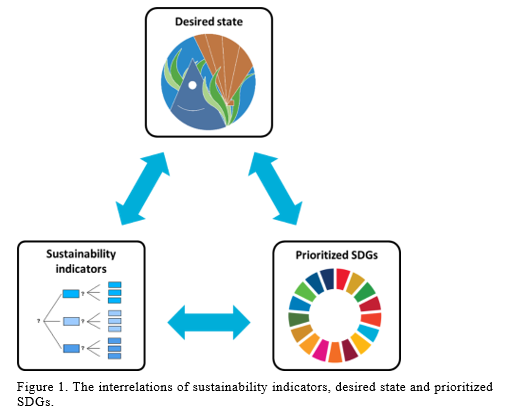A FRAMEWORK FOR SUSTAINABILITY ANALYSIS OF LOW TROPHIC SPECIES AQUACULTURE ACROSS THE ATLANTIC
Introduction
There is clear evidence that low trophic aquaculture is one of the most sustainable food production system available globally. However, in Europe the growth of low trophic aquaculture is stagnating. AquaVitae (AV) is a research and innovation project funded by the E uropean Union’s Horizon 2020 program. AV’s overall objective is to introduce new, and expand existing, low trophic species (LTS) products and processes to marine aquaculture value chains across the Atlantic. This includes macroalgae , echinoderms, shellfish and low trophic finfish species as well as exploring the use of LTS in integrated multi-trophic aquaculture (IMTA) systems . In addition to research o n specific value chains, a significant part of the research activities in AV aim to support a sustainable expansion of LTS aquaculture by addressing aspects in all sustainability domains, e.g. consumer attitudes and market potential as well as policy and governance in the social domain , profitability and socio-economic aspects in the economic domain, and environmental monitoring, risk assessment, and ecosystem services in the ecological domain. Much of this work is integrated into one of AV’s four cross-cutting work packages i.e. WP6 (Environmental Monitoring, Risk Assessment and Sustainability) .
The main objective of WP6 is to develop recommendations on how to increase LTS aquaculture production with a net positive impact on sustainability in and around the Atlantic Ocean under the principle of circular economy and to understand the possible impact of climate change on aquaculture in this area. To fulfil this objective, WP6 is organized into five different activities aimed at developing a framework for sustainability analysis, risk assessments, and environmental monitoring as well as performing the actual analysis in each of these topics. The results will be summarised as recommendations on how the sustainability of increasing LTS Aquaculture production can be optimized, including which positive sustainability aspects to exploit, which negative sustainability aspects to minimize, which risks to consider in relation to these aspects and how to monitor the system for early identification and mitigation of specific risks. In this poster, the structure, methods and expected impact of the work in WP6 will be presented more in detail together with the results from the first activity, a framework for sustainability analysis of low trophic aquaculture around the Atlantic.
Methods and results
The first task in WP6 aimed at providing a unified context for the following activities of WP6, enabling efficient co-operation and exchange of information within the WP. The developed framework, therefore, describes a desired state for LTS aquaculture in the Atlantic region and explains how this is linked to Agenda 2030 and the UN’s Sustainable Development Goals (SDGs). Acknowledging that the SDGs are integrated and indivisible, the SDGs with the strongest and most direct links to the desired state and vice versa were prioritized. A set of indicators to evaluate sustainability was developed in relation to the desired state and the SDGs (Figure 1).
The description of the desired state and prioritization of SDGs was based on a combination of literature reviews and interactions with experts, industry and other aquaculture stakeholders (e.g. third sector, public policy makers, consumers) at workshops and meetings, using a combination of top-down and bottom- up methods. In addition to SDG 14 , Life below water, which was identified as being the core SDG linking LTS aquaculture to sustainable development, the four SDGs with the strongest and most direct links to the AV objectives were found to be 2 (Zero hunger) , 8 (Decent work and economic growth) , 12 (Responsible consumption and production) and 13 (Climate action).
To compile the indicators, a broad screening of existing indicators was supplemented with the development of specific indicators. The screening covered, amongst other sources, the European Union Marine Strategic Framework Directive and Water Framework Directive, OSPAR, the SDGs, FAO and third-party certifications, and resulted in a database of 983 sustainability indicators. In addition to these 35 additional indicators were developed. Based on this, a set of 115 indicators was selected during a selection process , which included experts from within the AV consortium. The indicator set was developed to adequately describe, reflect and discern different types of LTS aquaculture, how they perform against a desired state and how they contribute to the SDGs most strongly linked to LTS aquaculture. The framework will be used to guide forthcoming sustainability analysis and risk assessments in WP6 with the aim to achieve the objective of the AV project and support the sustainable development of LTS aquaculture expansion around the Atlantic.
